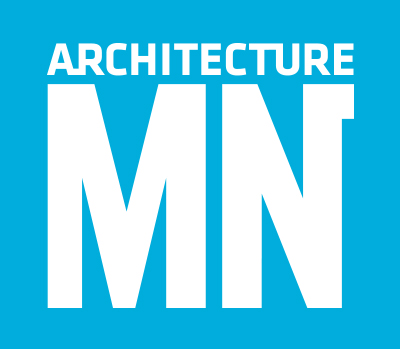A new pocket park in St. Paul memorializes a neighborhood destroyed by interstate construction—and celebrates the community and creativity that remains and thrives a half-century later
By Joel Hoekstra
In 2013, a two-story commercial building at the corner of Concordia Avenue and Fisk Street in St. Paul, overlooking I-94, went up in flames. Architecturally, the structure was unremarkable. But to many members of St. Paul’s African American community, the building, which had functioned over the decades as a restaurant, coffee shop, dance parlor, and VFW hall, was a cultural landmark: It was the last vestige of the old Rondo neighborhood, a community decimated by freeway construction in the 1960s.
Marvin Roger Anderson, who grew up in Rondo and later co-established an annual festival to commemorate the neighborhood, was determined not to let the building’s passing go unnoticed. He organized a wake for the building, gathered friends and community members, and delivered a eulogy for 820 Concordia. “I also bought a bottle of imported gin, with the intention that we would pour a libation into the ground to restore the property for good use,” says Anderson. “But as people told stories and memories were recalled, more of that gin got used for toasts than libations.” A good time was had by all.
Anderson awoke the next day with a recollection that he had closed the ceremony with a bold declaration, saying, “This is not the end of 820 Concordia! Something will rise on this land, I promise you!” As if to confirm that cloudy memory, an aide for the neighborhood’s city council member called Anderson shortly thereafter, encouraging him to apply for a planning grant to see what could be built on the site.
A museum would be too costly. But what about a park—perhaps a pocket park?
In 2016, Anderson and Floyd Smaller, the cofounders of Rondo Avenue Inc., the sponsor of the annual Rondo Days festival, were joined at the property by a host of politicians and former Rondo community members. With a $250,000 community-development block grant and financial support from a half-dozen foundations, Anderson and Smaller and their collaborators had drawn up plans for a memorial plaza—the first, they believed, dedicated to one of the many minority neighborhoods destroyed by interstate highway construction.
HISTORY
In its heyday, Rondo had been the center of St. Paul’s black community. The concentration of African Americans in the neighborhood, west of the state capitol, was largely the product of prejudice: Redlining practices kept African Americans from buying homes in other parts of the city. But Anderson says the de facto segregation ensured that blacks from all social classes and educational levels rubbed shoulders, resulting in communal, cultural, and creative benefits. Among the notable people who emerged from Rondo were NAACP head Roy Wilkins, National Urban League director Whitney Young, photographer Gordon Parks, and countless artists, actors, and musicians.
Anderson wanted to capture this rich history in the plaza design, so he turned to Nathan Johnson, AIA, and James Garrett Jr., AIA, at the St. Paul design firm 4RM+ULA. Both architects had deep connections within the community, and Anderson felt they understood the project. 4RM+ULA, in turn, tapped Minneapolis landscape architecture firm Ten x Ten.
“The size of the site was both a challenge and an opportunity,” says Ten x Ten’s Ross Altheimer. “It’s a typical residential lot—just one-tenth of an acre. At the same time, a residential lot is the perfect context for telling the story, because it was the scale at which the community was impacted.”
The plaza was to be a memorial, but nobody wanted the place to be somber. “It had to be playful, too,” says Johnson. “Rondo was such a vibrant community.”
REVIVAL
The Rondo Commemorative Plaza opened in July. Brick pavers, cleverly built-in benches, and a long exhibit wall that tells the decades-spanning Rondo story—including the stories of today’s Hmong and Oromo residents—surround a grassy mound that symbolizes both the old neighborhood’s resting place and the dreams that continue to rise amid its ruins. Atop the knoll are pieces of granite curb that once lined nearby streets.
At the south end, a pergola shades a platform where singers and musicians can perform, and an installation of chimes by local artist Seitu Jones can be played with hammers. Each chime is dedicated to one of the 18 north-south streets that ran through Rondo, and each hammer bears the inscription of a notable family or resident from the old neighborhood. A tower with a lighted beacon stands at the northeast corner of the park, visible to drivers passing by on I-94.
Anderson hopes the plaza will help rekindle the spirit of Rondo, bringing people of all backgrounds together. Recently, the idea of reconnecting the northern and southern halves of the historic neighborhood via an expansive land bridge over the interstate has gained traction among urban planners and community advocates. A land bridge wouldn’t bring old Rondo back, but Anderson has confidence that such a development would spawn new growth, creativity, and community. “I look at the tower on our plaza and see how it rises up—higher than the freeway,” says Anderson. “I hope it inspires people to see that, no matter what the obstacles, they can rise up and achieve what they want to do, too.”
RONDO COMMEMORATIVE PLAZA
Location: St. Paul, Minnesota
Client: Rondo Avenue Inc.
Client project manager: Marvin Roger Anderson
Architect: 4RM+ULA
Partner-in-charge: Nathan Johnson, AIA
Project lead designers: Nathan Johnson, AIA; James Garrett Jr., AIA
Project manager: Lyssa Washington, Assoc. AIA
Landscape architect: Ten x Ten
Artists: Roger Cummings; Seitu Jones
General contractor: THOR Construction
Size: 7,900 square feet
Cost: $450,000
Completion: August 2018
Photographer: Morgan Sheff


